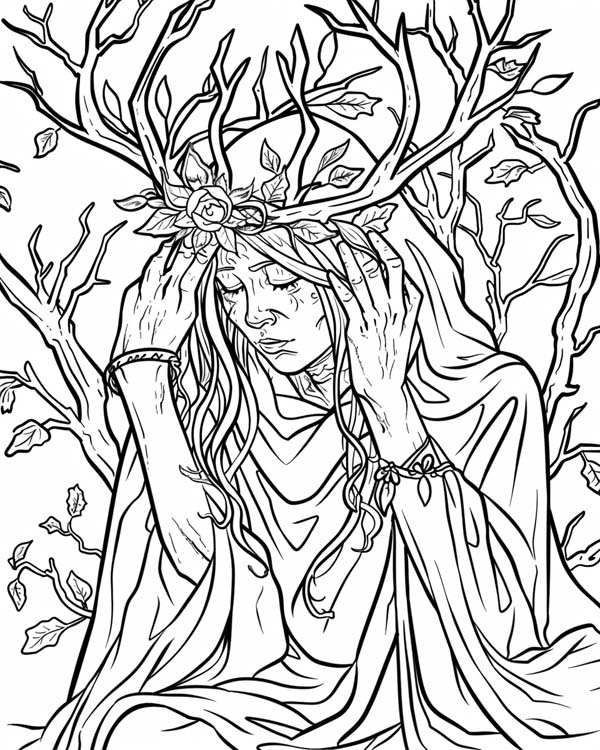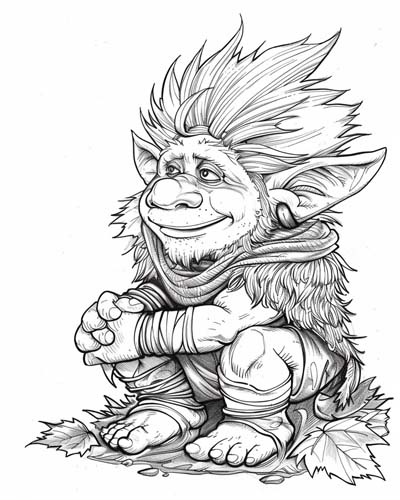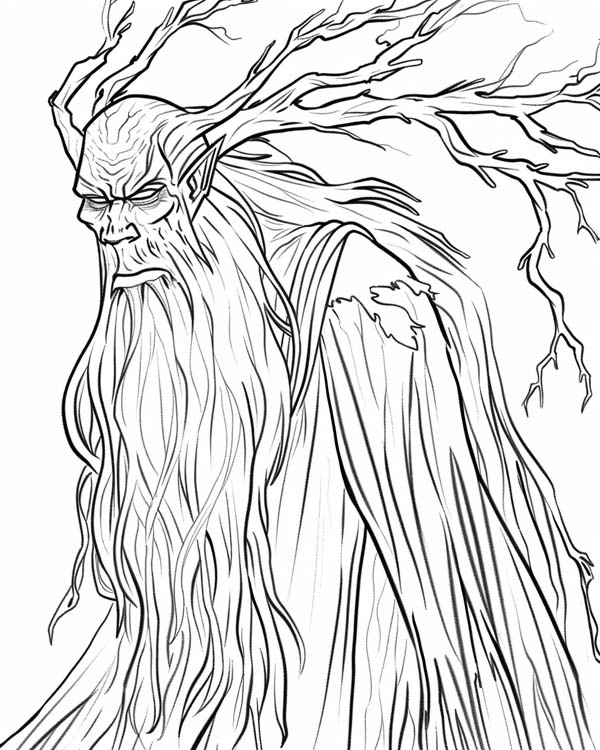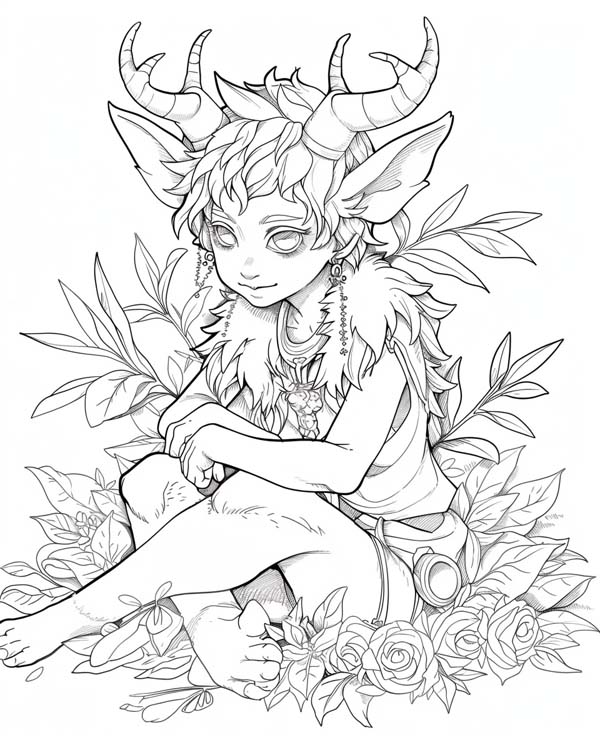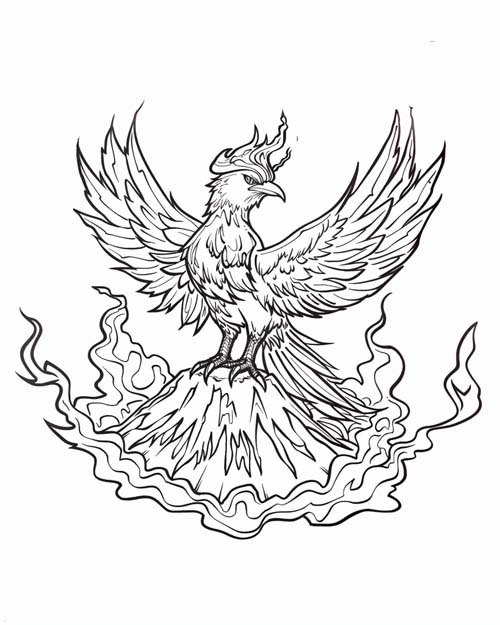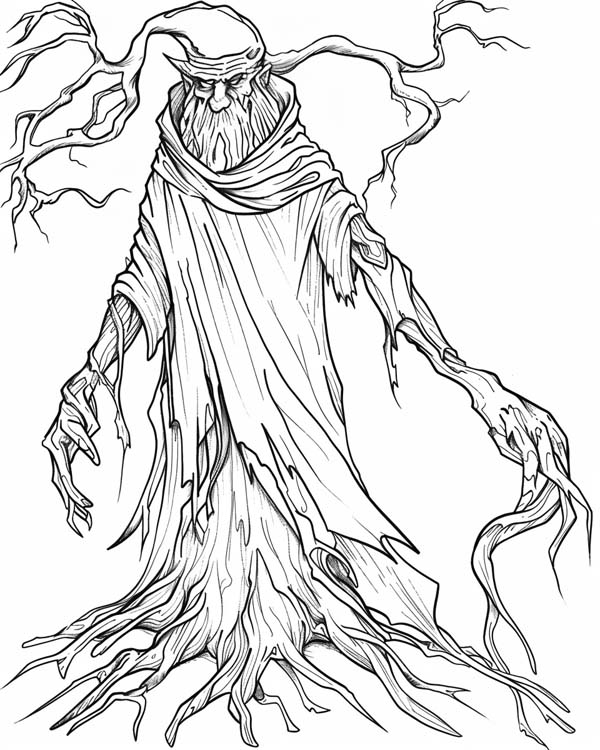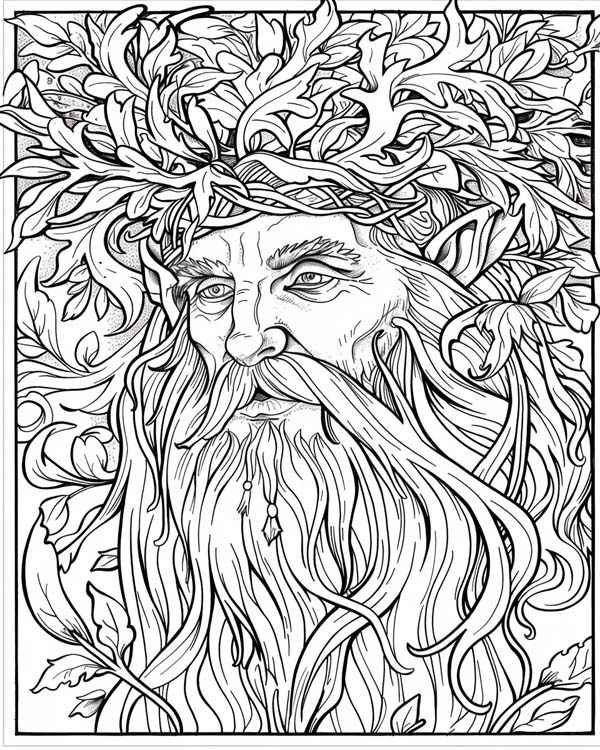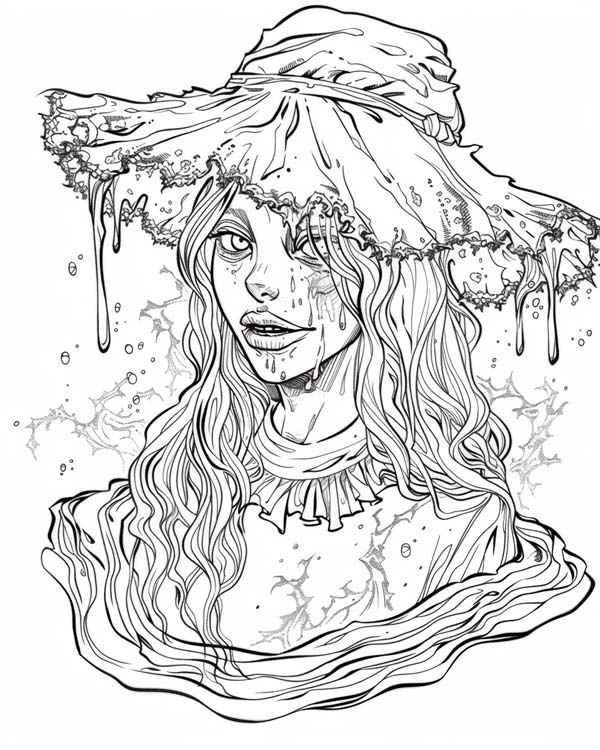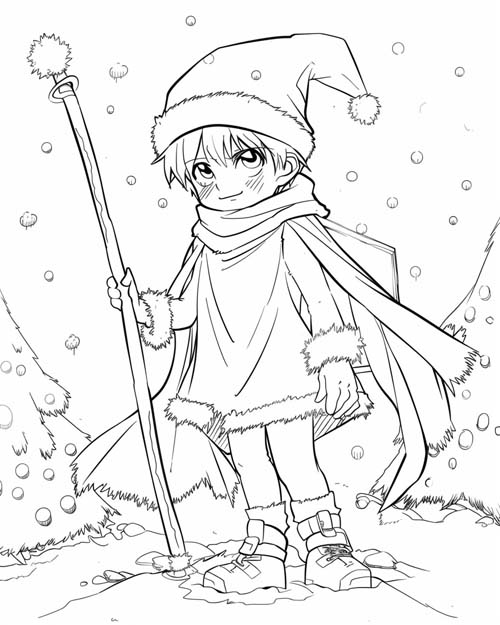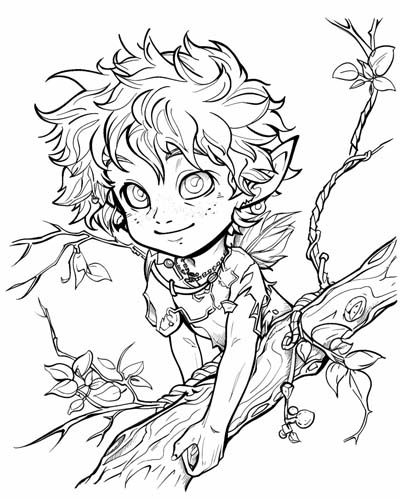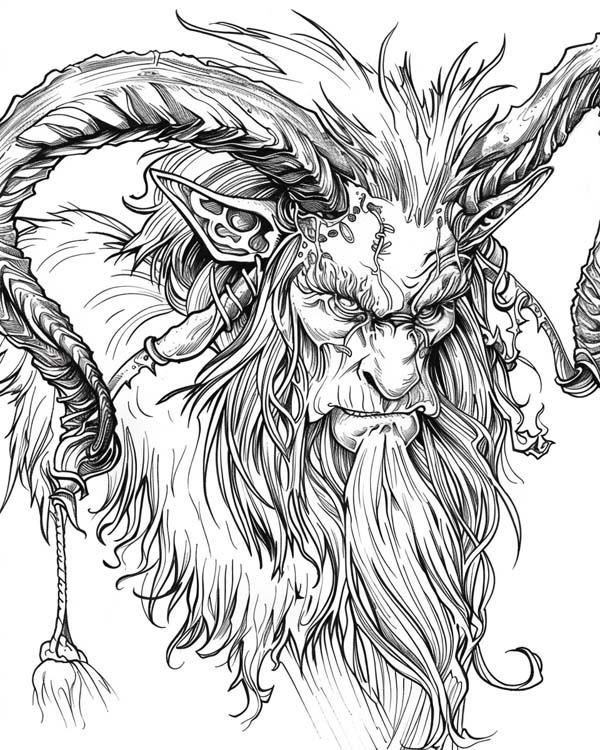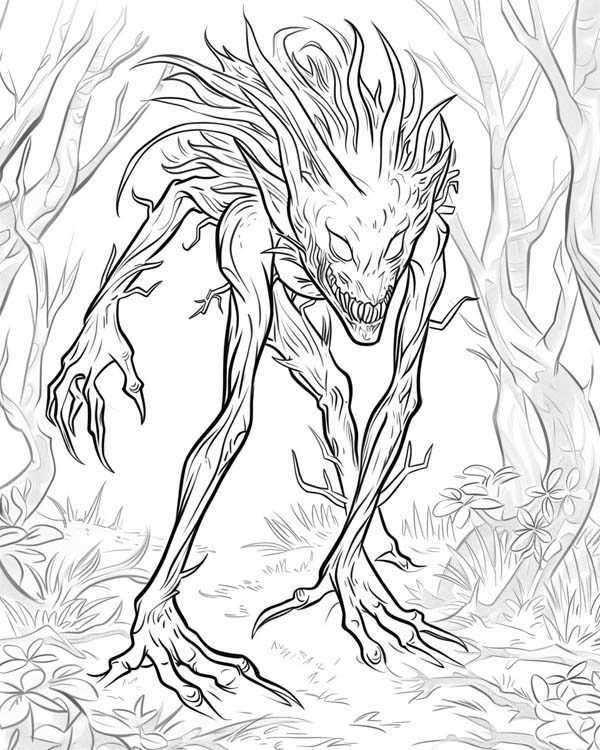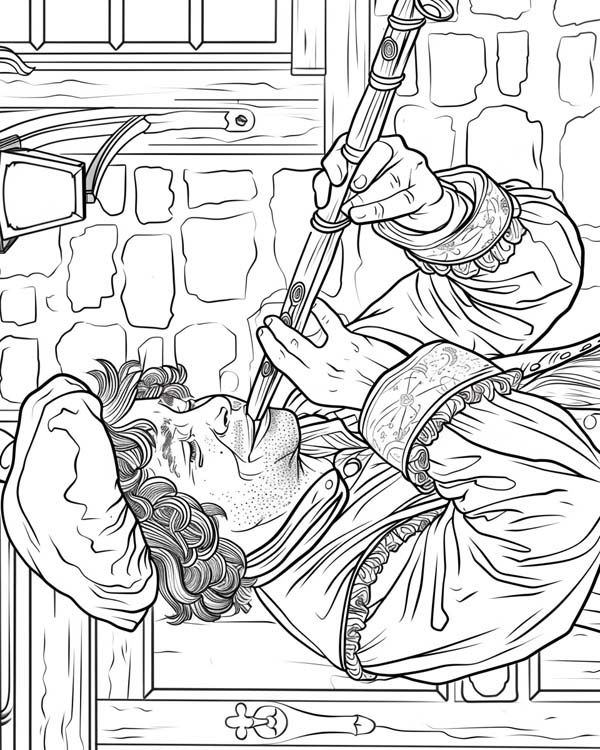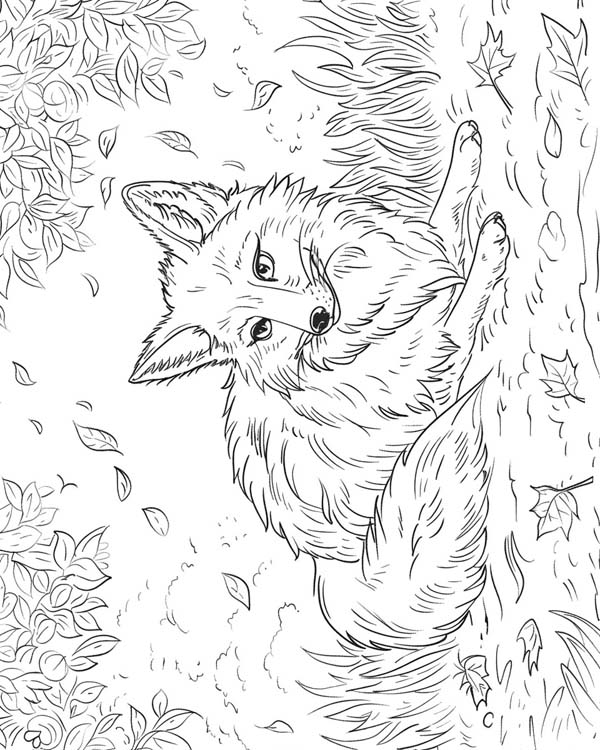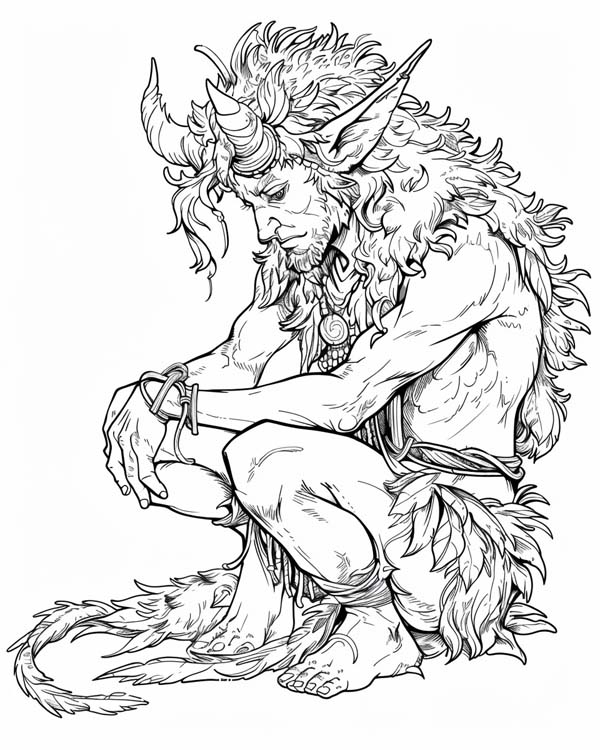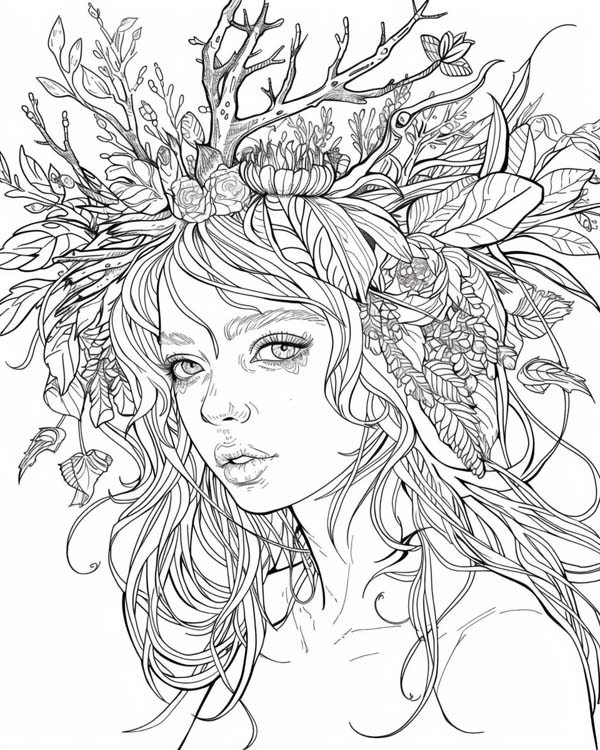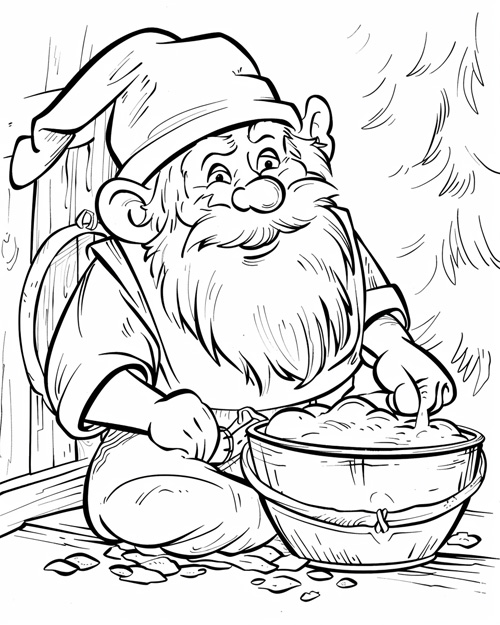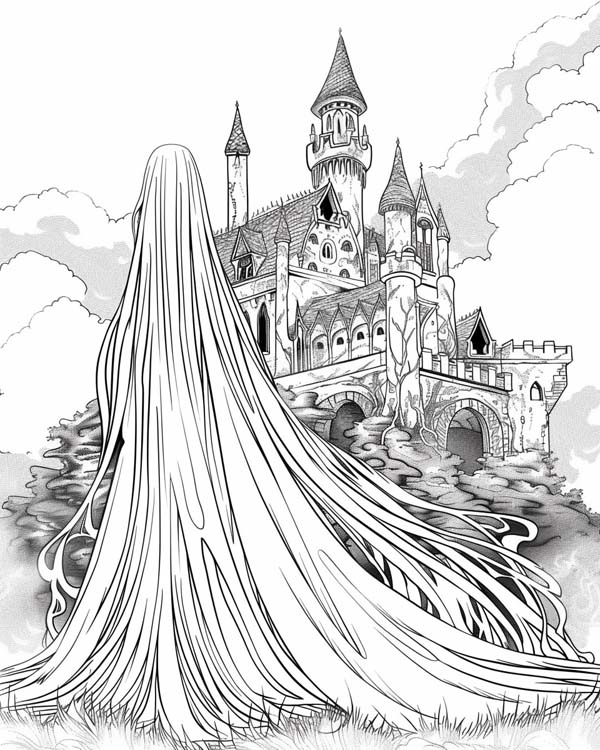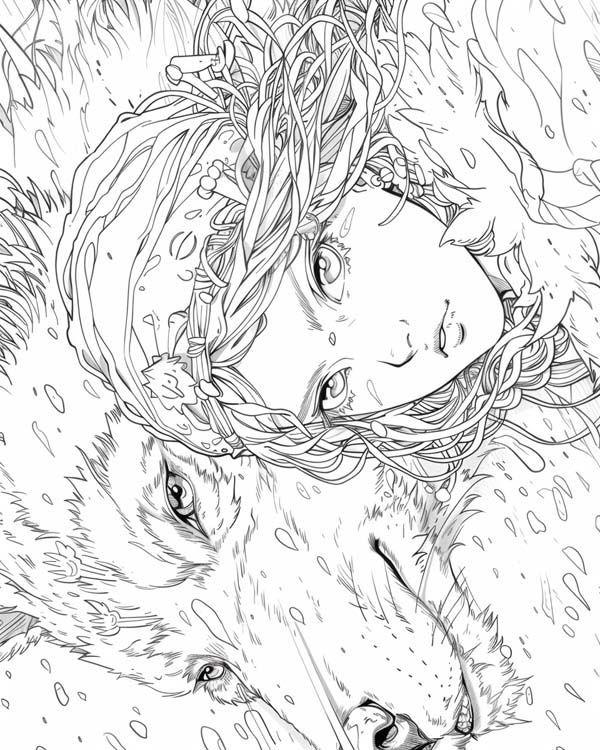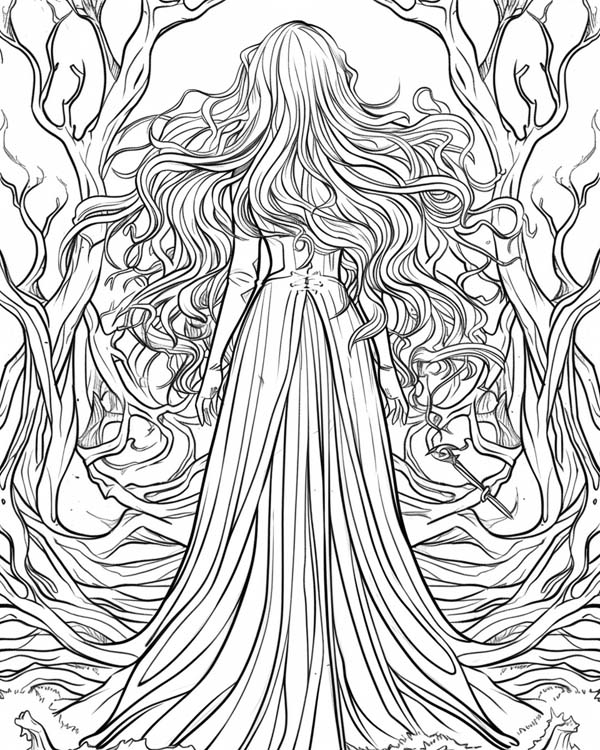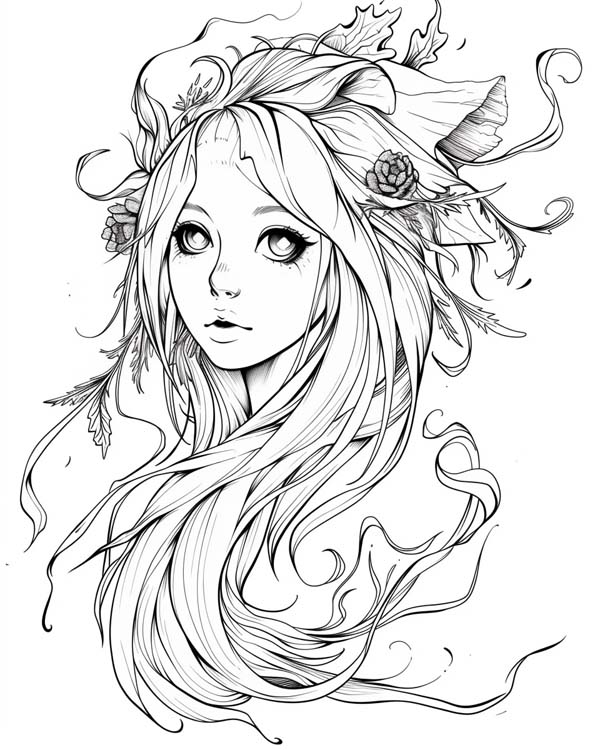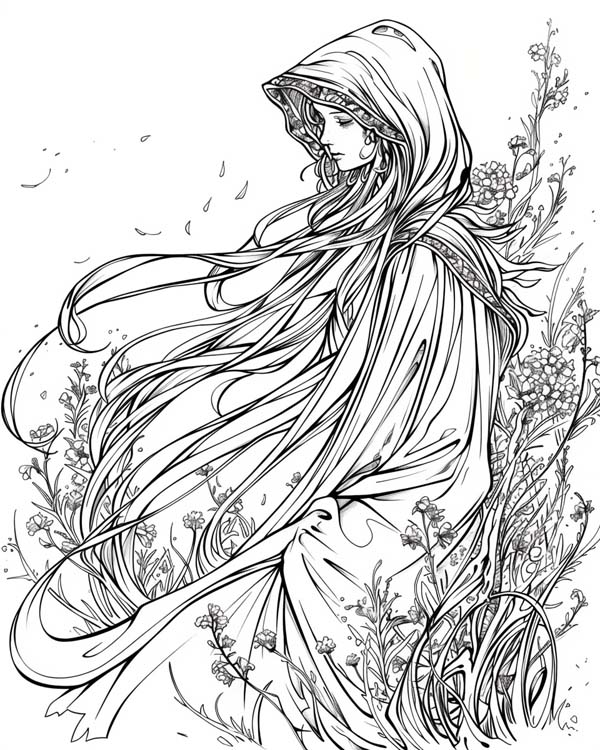Printable Coloring Pages
European Folklore Coloring Pages
Welcome to our European Folklore coloring pages section!
Stories from European folklore carry wonder, imagination, and the spirit of everyday life in centuries past. From mischievous spirits to mysterious guardians of forests, rivers, and homes, these tales explore how humans, animals, and magical beings interact in surprising, playful, and meaningful ways. Each story invites you to imagine a world where ordinary landscapes are full of hidden magic, where shadows may hold secrets, and where lessons are woven into every encounter. These characters and legends have traveled across villages, forests, and mountains, inspiring writers, artists, and storytellers for generations. They are part of a larger tapestry of folk imagination, showing both the distinct voices of European traditions and the universal themes that connect stories from cultures all over the world.
Baba Yaga is one of the most famous figures in Slavic folklore ... a mysterious witch who lives deep in the forest in a hut that stands on chicken legs. Her long, bony fingers, tangled hair, and sharp nose give her a fearsome appearance, but her stories reveal far more than simple wickedness. Sometimes she devours those who wander uninvited; other times, she helps the brave or the kind-hearted, offering wisdom, magical gifts, or tests of courage.
Riding through the air in a mortar and sweeping away her tracks with a broom, Baba Yaga embodies the wild power of nature and the ancient, unpredictable magic of the woods. She reminds us that folklore’s witches are not only symbols of fear but also of knowledge, transformation, and the untamed forces of life itself.
Black Annis
Black Annis is a fearsome hag from English folklore, said to lurk in the dark forests and jagged caves of Leicestershire. Her skin is as pale as moonlight, her long, iron claws gleaming, and her eyes glowing a faint green in the shadows. She uses her fearsome appearance to warn children to behave and stay close to home. While frightening, she embodies the rich imagination of folk tales, showing how the forests and night were imagined as places full of caution, wonder, and hidden power. Black Annis reminds us that even the scariest stories carry lessons about bravery and respect for the unknown.
Brownies
Brownies come from Scottish folklore as small, shaggy household spirits who secretly help with chores at night. They are usually dressed in rags or simple brown clothes, with tangled hair and glowing eyes. If treated with respect, they bring good luck and hard work, but if offended, they play tricks or vanish forever. Brownies reveal how folklore gave magical personality to the home, blending gratitude, caution, and wonder into stories of everyday life.
more Brownie coloring pages >
The Erlking
The Erlking is a sinister forest spirit from German folklore, made famous by Goethe’s Der Erlkönig. Often imagined with pale, almost translucent skin, flowing dark robes, and long, spindly fingers, he drifts through misty woods and moonlit paths. His voice is enchanting and dangerous, luring travelers--especially children--toward unseen perils. The Erlking embodies the mystery and danger of deep forests, teaching respect for nature’s power while inspiring stories filled with tension, fear, and wonder. His presence shows how European folktales use shadow, light, and movement to capture imagination.
Faun
Fauns are playful and lively forest creatures with the legs and hooves of a goat and the torso of a human. Their skin is earthy brown or sun-kissed, and their hair often blends with moss or autumn leaves. Known across European folklore, fauns are guardians of the woods and companions to nature’s creatures, playing flutes and dancing among sun-dappled glades. They are mischievous yet gentle, embodying the harmony of humans, animals, and forests. Fauns invite us to explore the magical side of nature, where shadows, light, and music create landscapes alive with movement and charm.
Firebird
The Firebird is a dazzling creature from Slavic folklore, often imagined with feathers that glow like living flames... gold, scarlet, and orange shimmering as though lit from within. Sometimes its feathers are said to shine so brightly that they can light an entire room.
The Firebird is both a blessing and a burden in stories: its capture promises great fortune, but the quest to find it often brings danger, hardship, and unexpected challenges.
more Firebird coloring pages >
Gnomes
Gnomes are small, sturdy guardians from European folklore, often seen with long white beards, bright red caps, and clothing in earthy tones. They are said to live underground or in gardens, tending to plants, animals, or hidden treasures. With their twinkling eyes and mischievous smiles, gnomes embody wisdom, secrecy, and the playful side of nature. Their image--half magical, half familiar--shows how folklore often imagined unseen helpers working quietly alongside everyday life.
The Green Knight
The Green Knight appears in medieval European tales as a towering, mysterious figure cloaked in green leaves, moss, and ivy. His hair and beard shimmer with earthy tones of forest greens and golden sunlight, and his eyes gleam with knowledge of the natural world. Often challenging travelers or guarding enchanted forests, he embodies the unpredictable, wild aspects of nature. The Green Knight reminds us that folklore celebrated both the wonder and danger of the woods, teaching respect for life, growth, and the mysteries hidden among trees, stones, and rivers.
The Green Man
The Green Man is one of the most enduring figures of European folklore, a leafy face surrounded by vines, branches, or flowers that can be found carved into churches, hidden in woodlands, or imagined in ancient stories. His skin is the color of moss and bark, his eyes deep green like forest shadows, and from his mouth or hair sprout curling leaves and blossoms. Though his exact meaning has changed over time, he is often seen as a symbol of nature’s cycles--growth in spring, abundance in summer, decline in autumn, and rest in winter.
more Green Man coloring pages >
Huldra
The Huldra is a forest spirit from Scandinavian folklore, often appearing as a beautiful woman with long golden hair and a crown of flowers. But her back is hollow like a rotting tree, or she may have a cow’s tail, marking her as otherworldly. She lures travelers into the forest, sometimes to reward them, sometimes to test them. The Huldra shows how folklore mixed wonder, danger, and natural imagery, turning the forest into a place alive with secrets and allure.
more Huldra coloring pages >
Jenny Greenteeth
Jenny Greenteeth is a water hag from English folklore, with skin the color of algae and hair like tangled riverweed. Her sharp teeth glint as she lurks beneath ponds, rivers, or misty pools, waiting to catch the unwary. These stories warned children to respect water and the unknown dangers it could hide, blending fear with fascination. Jenny’s eerie, green-hued presence also sparks imagination, inspiring tales of ghostly waters, mysterious ripples, and spirits that remind humans of the magic and peril hidden in nature.
Jack Frost
Jack Frost is a mischievous figure who personifies winter’s chill, nipping at toes, painting frosty patterns on windows, and leaving sparkling ice on the landscape. He has roots in older myths, including the frost giants of Norse mythology and winter spirits from Slavic folklore. In these traditions, such beings represented the harsh, cold forces of nature, shaping snow, ice, and freezing winds while inspiring awe and respect. Over time, Jack Frost evolved into a more playful character in European folklore, blending the power of winter with imagination and seasonal storytelling, reminding us that even the coldest months hold magic and wonder.
more Jack Frost coloring pages >
Kobolds
Kobolds are German household and mine spirits, often mischievous, sometimes helpful, and sometimes dangerous. They can appear as small, childlike figures in ragged clothes, as animals, or even as flickering shadows. In mines they might lead workers to treasure--or to collapse--depending on how they are treated. Kobolds show how people once explained luck, danger, and mystery in both homes and workplaces, turning invisible forces into colorful, imaginative beings.
more Kobold coloring pages >
Krampus
Krampus is a horned, demonic figure from Alpine folklore, covered in dark, shaggy fur, with twisted horns and glowing red eyes. He clatters chains and rattles bells as he punishes children who misbehave, in stark contrast to the jolly Saint Nicholas. His long, lolling tongue and sharp claws make him visually dramatic, terrifying, yet oddly fascinating. Krampus shows how European folk tales used fear and spectacle to teach moral lessons, blending celebration with caution and reminding us that stories could be thrilling, frightening, and deeply imaginative all at once.
Leshy
The Leshy is a towering forest spirit from Slavic folklore, often with skin like bark, hair like moss, and eyes glowing amber in the shadowed woods. His long limbs stretch like branches, blending him into the trees he protects. Mischievous yet powerful, he can lead travelers astray or guide them safely, depending on their respect for the forest. The Leshy embodies the wild, mysterious energy of nature, teaching that forests were imagined as alive, magical, and sometimes dangerous, full of lessons and hidden wonders for those who wandered beneath their leafy canopies.
Nøkk / Nixie
The Nøkk, or Nixie, is a shapeshifting water spirit from Scandinavian and Germanic folklore, often seen playing haunting tunes on a violin or harp by lakes and rivers. With hair like flowing water, skin shimmering in greens and blues, and eyes like deep pools, the Nøkk lures listeners closer. Sometimes kind, sometimes dangerous, they reflect both the beauty and peril of rivers and lakes. These stories remind us to respect the power of water while imagining it alive with music and mystery.
The Pied Piper
The Pied Piper of Hamelin is a mysterious figure from German folklore, clothed in colorful, flowing garments, playing a flute that can charm rats--or children. His cloak might shimmer with reds, blues, and golds, catching the sunlight as he walks through cobbled streets. The Piper’s tale warns of broken promises and the consequences of ignoring warnings, blending music, morality, and magic. European storytellers used his image to capture imagination, showing that even the simplest melodies could carry wonder, caution, and the eerie power of enchantment.
Reynard the Fox
Reynard is a clever, mischievous fox from medieval German and French folklore, with sleek red-orange fur, a bushy tail tipped with white, and bright, cunning eyes. He outwits humans and animals alike, using intelligence and guile to navigate tricky situations. Reynard’s adventures celebrate cleverness and playful trickery, illustrating how European folktales used animals to reflect human nature. His vivid colors and sly expressions make him one of the most visually memorable trickster figures in folklore, inspiring art, storytelling, and imagination across generations.
The Sandman
The Sandman is a mysterious figure from European folklore, known for bringing sleep and dreams to children and adults alike. He moves quietly through the night, sprinkling magical dust that carries imagination, stories, and visions into the minds of sleepers. Sometimes gentle, sometimes a little mischievous, the Sandman inspires curiosity, wonder, and creativity, reminding us that dreams are full of possibility. Though he is most often a shadowy, quiet presence, his spirit travels across villages, forests, and distant lands, connecting the ordinary world with the magic that comes alive when we close our eyes.
Satyr
Satyrs are lively forest creatures often adorned with earthy brown or tawny fur. Their horns curl from their heads, and they carry flutes or pipes, playing music that echoes through the woods. Mischievous and playful, satyrs symbolize the joyous, untamed side of nature. European folklore used them to remind people that the forest is alive with magic, rhythm, and unexpected delights, where humans and spirits could interact in moments of mischief and wonder.
Selkies
Selkies are magical seal-people from Scottish and Irish folklore, able to shed their seal skins and walk on land as humans. With shining sea-colored eyes, flowing hair, and smooth fur, they embody the enchantment of the ocean. Many tales describe love, longing, and loss, as selkies are caught between two worlds--land and sea. Selkies reflect the close bond people felt with the sea, seeing in its mystery both beauty and sorrow.
more Selkie coloring pages >
Spriggan
Spriggans are magical guardians from Cornish folklore, often protecting treasures, ancient stones, or hidden places in the forest. While some tales describe them as mischievous and gnarled, they can also appear as small, enchanting children of the woods, with hair like autumn leaves, bright eyes sparkling like dew, and skin kissed by sunlight filtering through the trees. These forest children move quietly among moss-covered stones and flowering clearings, playful yet wise, reminding travelers that even the smallest beings can hold great power. Spriggans teach us that the forest is alive with magic, mischief, and mystery, and that wonder can be found in unexpected forms, from hidden glades to the tiniest, most luminous creatures.
Tomte / Nisse
Tomte, or Nisse, are small farm spirits from Scandinavian folklore, with long beards, gray clothes, and bright red hats. They protect animals and homes, but only if they are respected and given small offerings, like a bowl of porridge at Christmas. If angered, they play tricks or leave, taking good fortune with them. Tomte and Nisse capture the cozy, magical side of folklore, showing how even barns and farmyards were thought to have their own watchful guardians.
more Nisse coloring pages >
Trolls
Trolls are legendary beings from Scandinavian folklore, often imagined as towering and rough-skinned, with gray or mossy tones that blend with rocks and forests. Some are slow and dim-witted, tricked by clever humans, while others are dangerous giants haunting mountain caves. Their shaggy hair, tusk-like teeth, and lumpy features make them both fearsome and fascinating. Trolls remind us how people once explained the power and mystery of mountains, storms, and wild places, turning the landscape itself into living beings of legend.
more Troll coloring pages >
The White Lady
The White Lady is a ghostly figure from European folklore, often appearing in flowing white robes that shimmer in moonlight or mist. Found near castles, forests, or roads, she is a symbol of loss, memory, and cautionary tales. Her pale form drifts silently through the night, embodying the mysterious and reflective side of human imagination. White Ladies remind us that folklore preserves history, emotion, and the timeless fascination with spirits and the unseen world.
The Wild Hunt
The Wild Hunt is a ghostly procession of spectral hunters racing across stormy skies in Germanic and Alpine folklore. Horses with flowing manes of silver and black, riders cloaked in shadow, and ethereal hounds streak through the night, inspiring awe and fear. The Hunt represents death, fate, and the powerful forces of nature, showing how Europeans imagined the world as alive with invisible energy.
Amid this eerie cavalcade, a wolf often appears as a companion or even a guide, its fur dark as midnight, eyes glowing amber, and movements both graceful and predatory. The wolf embodies the wild, untamed forces of nature, tracking those who wander too close or protecting travelers chosen by fate.
The Wild Woman
The Wild Woman is a mysterious figure in European folklore, often depicted living on the edges of forests or mountains, clothed in furs or tangled leaves, with hair wild as the wind. She embodies freedom, independence, and the untamed aspects of nature. Sometimes helpful, sometimes testing travelers, she reminds us that life contains both challenges and magic. Wild Women celebrate the unpredictability of the world and the enduring fascination with humans and spirits who dwell outside ordinary society.
Will-o-wisp
Will-o’-the-Wisps are ghostly lights that dance over marshes, bogs, and misty meadows across Europe. Their flickering glow can be soft blue, green, or white, moving like playful spirits that tease and guide travelers. Folktales describe them as mysterious, sometimes misleading, sometimes helpful. Will-o’-the-Wisps capture the human imagination, showing how ordinary phenomena--like glowing gases--became magical, cautionary, and whimsical in folklore.
Witte Wieven
Witte Wieven are spirits of wise women from Dutch folklore, appearing as misty, glowing figures in forests, meadows, or near ancient burial mounds. Often clothed in white or silver, they carry a sense of wisdom, magic, and guidance. Sometimes helpful, sometimes enigmatic, they remind humans to respect knowledge, the natural world, and ancestral traditions. Witte Wieven celebrate the intersection of magic, learning, and mystery that makes European folklore endlessly captivating.
From the misty forests of England and the dark woodlands of Germany to the rolling hills of France and the rugged mountains of the Alps, European folklore has traveled across centuries and regions, blending local traditions, beliefs, and stories. Villages shared tales of forest spirits, clever tricksters, and spectral hunts, while wandering storytellers carried legends from one region to another, allowing motifs and characters to mingle and evolve. Hags and wise women, playful forest children, ghostly lights over marshes, and long-limbed spirits of the woods all reflect the same human fascination with the unknown, the magical, and the mysterious forces that shape our lives.
While folklore often grew from everyday life - warnings to children, explanations of natural phenomena, or celebrations of seasonal change - it overlaps with mythology in surprising ways. Some spirits take on godlike qualities, echoing the themes, powers, and archetypes found in myth, while remaining rooted in local landscapes and community imagination. A spectral hunt racing across stormy skies, a mischievous fox outwitting humans, or a forest guardian blending with trees shows how these stories explore morality, courage, cleverness, and our relationship with the natural world.
Over time, these tales have seeped into modern storytelling, inspiring literature, films, comics, and art. Writers and artists have reimagined Krampus, the White Lady, Reynard the Fox, and Leshy for new audiences, keeping the essence of their folklore while adding layers of personality, drama, and visual flair. The motifs like ghostly lights, trickster cleverness, forest guardians, and magical children continue to capture the imagination, reminding us that these centuries-old stories are not just relics of the past, but living traditions that shape the way we dream, play, and create. By exploring European folklore, we connect with a rich tapestry of human creativity, regional diversity, and shared wonder, discovering that magic is never far from the world around us and that even the most ordinary landscapes can hide extraordinary tales waiting to be imagined.



